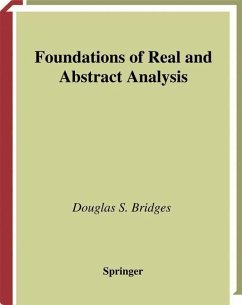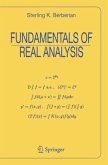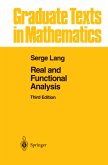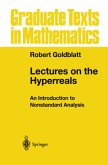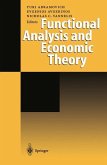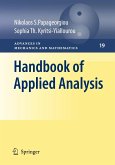The core chapters of this volume provide a complete course on metric, normed, and Hilbert spaces, and include many results and exercises seldom found in texts on analysis at this level. The author covers an unusually wide range of material in a clear and concise format including elementary real analysis, Lebesgue integration on R, and an introduction to functional analysis. This makes a versatile text also suited for courses on real analysis, metric spaces, abstract analysis, and modern analysis. The book begins with a comprehensive chapter providing a fast-paced course on real analysis, and is followed by an introduction to the Lebesgue integral. This provides a reference for later chapters as well as an introduction for students with only the typical sequence of undergraduate calculus courses as prerequisites. Other features include a chapter introducing functional analysis, the Hahn-Banach theorem and duality, separation theorems, the Baire Category Theorem, the Open Mapping Theorem and their consequences, and unusual applications such as weak solutions of the Dirichlet Problem and Pareto optimality in Mathematical Economics. Of special interest is the unique collection of nearly 750 exercises, many with guidelines for their solutions. The exercises include applications and extensions of the main propositions and theorems, results that fill in gaps in proofs or that prepare for proofs later in the book, pointers to new branches of the subject, and difficult challenges for the very best students.
The core of this book, Chapters three through five, presents a course on metric, normed, and Hilbert spaces at the senior/graduate level. The motivation for each of these chapters is the generalisation of a particular attribute of the n Euclidean space R: in Chapter 3, that attribute is distance; in Chapter 4, length; and in Chapter 5, inner product. In addition to the standard topics that, arguably, should form part of the armoury of any graduate student in mathematics, physics, mathematical economics, theoretical statistics,. . . , this part of the book contains many results and exercises that are seldom found in texts on analysis at this level. Examples of the latter are Wong's Theorem (3.3.12) showing that the Lebesgue covering property is equivalent to the uniform continuity property, and Motzkin's result (5. 2. 2) that a nonempty closed subset of Euclidean space has the unique closest point property if and only if it is convex. The sad reality today is that, perceiving themas one of the harder parts of their mathematical studies, students contrive to avoid analysis courses at almost any cost, in particular that of their own educational and technical deprivation. Many universities have at times capitulated to the negative demand of students for analysis courses and have seriously watered down their expectations of students in that area. As a result, mathematics majors are graduating, sometimes with high honours, with little exposure to anything but a rudimentary course or two on real and complex analysis, often without even an introduction to the Lebesgue integral.
The core of this book, Chapters three through five, presents a course on metric, normed, and Hilbert spaces at the senior/graduate level. The motivation for each of these chapters is the generalisation of a particular attribute of the n Euclidean space R: in Chapter 3, that attribute is distance; in Chapter 4, length; and in Chapter 5, inner product. In addition to the standard topics that, arguably, should form part of the armoury of any graduate student in mathematics, physics, mathematical economics, theoretical statistics,. . . , this part of the book contains many results and exercises that are seldom found in texts on analysis at this level. Examples of the latter are Wong's Theorem (3.3.12) showing that the Lebesgue covering property is equivalent to the uniform continuity property, and Motzkin's result (5. 2. 2) that a nonempty closed subset of Euclidean space has the unique closest point property if and only if it is convex. The sad reality today is that, perceiving themas one of the harder parts of their mathematical studies, students contrive to avoid analysis courses at almost any cost, in particular that of their own educational and technical deprivation. Many universities have at times capitulated to the negative demand of students for analysis courses and have seriously watered down their expectations of students in that area. As a result, mathematics majors are graduating, sometimes with high honours, with little exposure to anything but a rudimentary course or two on real and complex analysis, often without even an introduction to the Lebesgue integral.

